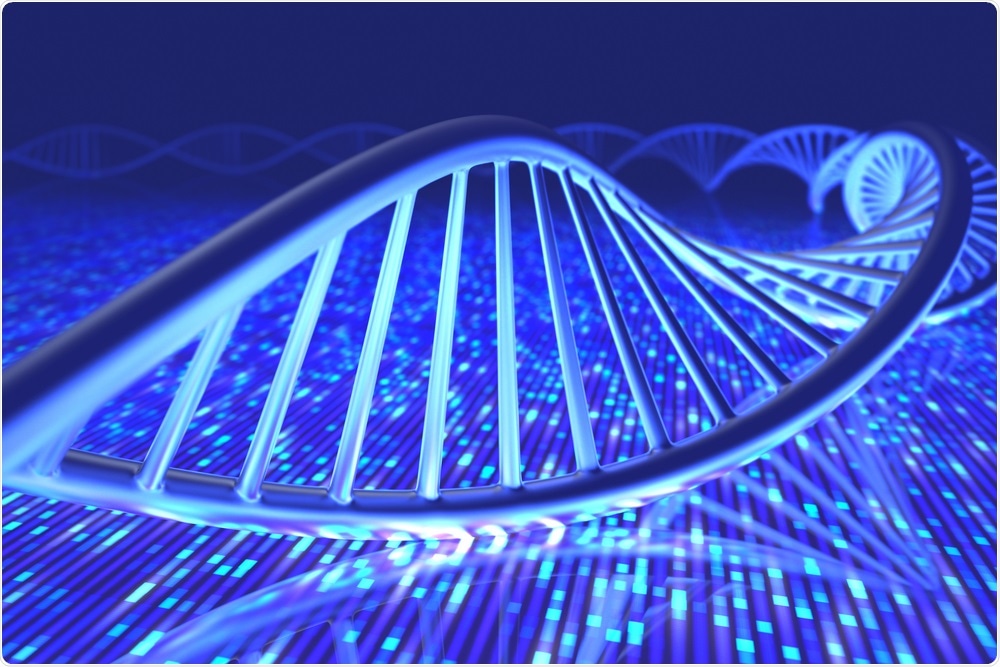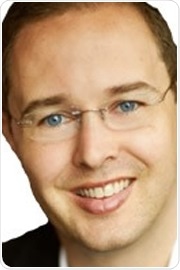The first methods for sequencing DNA were developed in the late 1970s. Frederick Sanger developed rapid DNA sequencing methods and published a method for "DNA sequencing with chain-terminating inhibitors,” while Walter Gilbert and Allan Maxam developed "DNA sequencing by chemical degradation". Both methods quickly gained strong followings and were used to sequence a wide variety of DNAs.
 ktsdesign | Shutterstock
ktsdesign | Shutterstock
Scientists continually tweaked and improved both methods including switching the detection from radioactive DNA to light-based detection. The Sanger method became robust enough that an automated sequencer was introduced based on that technology in 1985, significantly improving throughput.
The next major advance was the automated capillary sequencer that was introduced in 1998. This was so sufficiently powerful that it became possible to sequence the entire human genome.
This feat demonstrated both the power and weakness of first generation sequencing which was still too expensive for routine human sequencing. This need led to a series of highly parallelized, second generation sequencing systems that relied on amplification of DNA.
The first such systems were commercialized by 454 and then Solexa which later became Illumina. These sequencers again raised throughput while lowering costs but, for the first time, introduced trade-offs with shorter read lengths and higher error rates.
Helicos introduced the first single-molecule system in 2008 and this was followed by another single-molecule sequencer by Pacific BioSciences. These methods highlighted the issues of high error rates and read lengths.
More recently, the Ion Torrent system was introduced which was the first, since the early days of sequencing, to switch from light-based detection.
While DNA sequencing has made great strides, there is no single system that provides all the desired attributes for all applications. Thus, there is ample room for new technologies that avoid issues raised by short reads, amplification bias, and the high costs necessitated by light-based detection.
What are the main limitations with the current standard technique?
The most commonly used sequencing techniques rely on amplification which both limits the read lengths that can be obtained and introduces quantitative biases into the output. This means that genomes that contain repetitive or difficult to sequence regions cannot be effectively assembled.
This is especially a problem with tumor and plant genomes but is also a problem for many small microbial genomes. You simply cannot put them together in the right order without going through expensive and time-consuming supplemental methods.
Nanodetector systems have the potential to generate much longer reads that will eliminate the supplemental methods and complement the current short-read systems.
Though sequencing is now much, much cheaper than it was even a few years ago, it is still too expensive for many routine uses. Part of this is the expense of lasers and complex CCD cameras that are needed in current instruments.
Electronic detection is a much cheaper alternative. Similarly, many nanodetector systems use much less expensive reagents and can save on costs there as well.
Could you please introduce the Nabsys platform and explain why and how it was developed?
The Nabsys platform is based on highly scalable, semiconductor chips like those found in many consumer goods. These chips are turned into nanodetectors in which the DNA flows through a nanochannel at a very high velocity.
Despite moving at greater than one million base pairs per second, sequence tags can be detected electronically and used to generate long-range information that can be used for assembling or mapping genomes.
Because the detection is done electronically, it is much less expensive than standard sequencing methods. The DNA molecules are also much longer, allowing long-range information to be generated that can be used to complement the short-read information from other technologies.
These advances required our engineers to design a process for turning semiconductor chips into robust nanochannels, our scientists to discover new ways of working with very long DNA, and our computer programmers to develop new methods for handling the data more quickly and easily than typical DNA sequence data.
How does the platform analyze single DNA molecules?
Long DNA is isolated using standard techniques. We then add tags to specific locations on the DNA and incubate it with reagents that stiffen the DNA to straighten it out and make it easier to analyze.
When there are no DNA molecules in the nanochannel, the electrical properties are constant. When the DNA enters the channel, the voltage and current change. When there is also a tag present in the channel, the electrical properties change even more.
We simply measure the size of these changes and the times between changes. These times can be converted to distances so we can generate an accurate map of the DNA that can be hundreds of kilobases long. If the genome is longer than that, the maps are overlapped and combined to create a full-length genome map.
In what fields is the Nabsys technology currently being applied?
Right now, the technology is being used for strain identification, genome mapping and assembly, structural variant detection, and similar applications.
As the throughput increases, a variety of other applications will also be feasible including microbiome analysis, mapping of heterogeneous tumor samples, mapping and assembling plant genomes and other methods that are difficult to carry out with current technologies.
The instrument is very flexible so will be usable for many different applications in the same laboratory.
What advantages does the Nabsys system offer over other DNA sequencing techniques?
The Nabsys system provides many advantages but it is also very important to recognize that it is actually highly complementary to existing short-read technologies. By including Nabsys data, researchers will be able to take the short contigs they currently assemble and turn them into complete genomes that will allow detection of the structural variation that is currently being overlooked.
In addition to making short-read data more useful, the Nabsys instrument will be valuable for stand-alone applications that benefit from its speed, scalability, precision, and accuracy. For many applications, the scalability will allow much more in-depth analyses than currently feasible.
The electronic nature of the detection reduces costs and improves resolution beyond the diffraction limit imposed by light-based detection. Omitting images also reduces the data burden and makes analysis easier.
In what ways is the Nabsys system limited?
Right now, we have a single but very fast detector per chip. This makes the current instrument better suited to smaller genomes. However, we are already working on chips that will have multiple detectors per chip and this will eliminate that limitation. We will be able to dramatically increase the number of detectors on each chip so that throughput will never be an issue.
Nabsys received a “$1000 Genome” award from the National Human Genome Research Institute of the NIH. What impact has this had?
This was an important source of research funds and technology validation. It helped fund the foundational research that has allowed us to develop the technology to a point where customers are now using it to answer scientific questions.
The NHGRI program had the added benefit of encouraging researchers across many technologies to meet and exchange information. These cross-technology interactions were very useful for helping all of us move forward more quickly.
What do you think the future holds for DNA sequencing?
DNA sequencing will become an increasingly important and fundamental technology as time goes on. Right now, the typical person thinks of having his or her genome sequenced as a one-time happening. In fact, it may be advantageous to be sequenced many times.
For example, if someone gets cancer, you would want to sequence the cancerous cells as soon as they are detected and again throughout the treatment process. It will become routine to sequence bodily fluids to determine how your health may be changing.
DNA sequencing as a major component of environmental surveillance will also become much more important with the air we breathe and the food and water we consume monitored to ensure its quality.
What are Nabsys’ plans for the future?
Nabsys will continue to improve its technology to make it the best choice for an ever-increasing number of applications. We will strive to increase throughput to open up new applications. We will simplify sample preparation and improve portability so the technology can be used by anyone wherever they need genomic data.
Where can readers find more information?
Readers can go to http://www.nabsys.com/ to learn more about our technology, its applications and our company as a whole.
About Barrett Bready, M.D., President and CEO
 Dr. Bready is President, CEO, and co-founder of Nabsys, a developer of semiconductor-based tools for single-molecule genomic analysis. He has grown Nabsys from a single employee to over 50 and raised nearly $50 million in venture financing to support the company’s growth.
Dr. Bready is President, CEO, and co-founder of Nabsys, a developer of semiconductor-based tools for single-molecule genomic analysis. He has grown Nabsys from a single employee to over 50 and raised nearly $50 million in venture financing to support the company’s growth.
Dr. Bready is an adjunct professor at Brown University where he teaches Biotechnology Management, a course on the business of biotechnology. He serves as a commissioner of the I-195 Redevelopment District Commission, a large land redevelopment project in downtown Providence with a focus on life sciences and other high technology sectors.
He has received numerous awards including, in 2011, Innovator of the Year. Dr. Bready received his M.D. and his Sc.B. (physics) through Brown University’s Program in Liberal Medical Education (PLME).